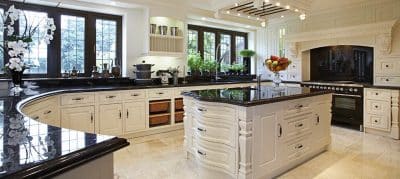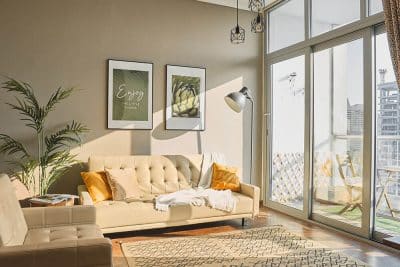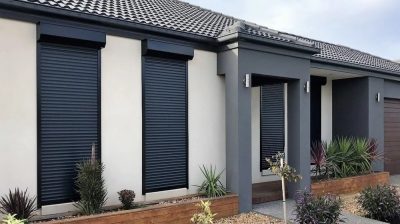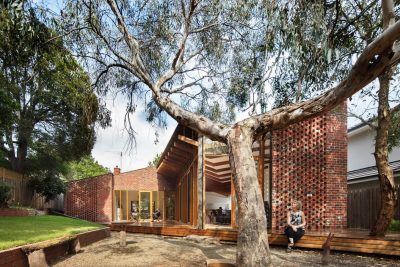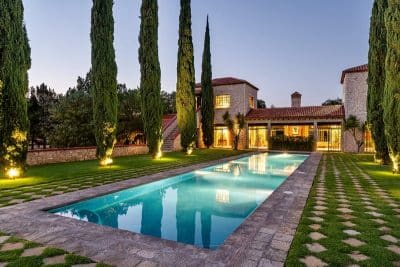
Hardwood floors remain an enduring and desirable flooring option for homes, but solid wood has key drawbacks, like susceptibility to moisture damage or installation limits over concrete subfloors. Benefits of engineered wood flooring include elegant wood aesthetics, enhanced durability, and versatile installation capabilities, opening up new choices for beautiful, quality flooring in your home. Read to understand why this versatile composite solution will be an ideal and reliable flooring option for years.
What is Engineered Wood Flooring?
Engineered wood flooring uses natural sliced wood veneers laminated onto a multilayer base, often high-density fiberboard. This specialized backing lends structural stability to the wood, allowing for thinner yet still durable flooring pieces that are impossible with solid wood alone.
These layers make engineered wood surprisingly resilient and moisture-resistant, making it ideal for long-lasting flooring. The veneer thickness, wood species, finish, grading, and plank dimensions still vary beautifully, but they are more tolerable to climates, subfloors, and wear.
The Allure of Engineered Wood Flooring: A Multitude of Benefits
These enhanced composite features make engineered wood an exceptional choice:
Visual Versatility: With different wood veneer options finished in gloss, semi-gloss, or matte, the aesthetic versatility seamlessly matches any decor from modern minimalist to farmhouse classic.
Enhanced Stability: The layered backing minimizes natural wood expansion and contraction due to humidity and climate changes. This allows beautiful flooring even in moisture fluctuation risks.
Moisture Resistance: Specialized plywood or high-density composition cores protect against the warping and water damage risks that solid wood faces over time or through accidental spills. This results in peace of mind.
Installation Ease: The stable backing simplifies installation over concrete, plywood, tiles or even well-bonded vinyl floor coverings by limiting issues with uneven substrates. Verified floor prep is still key.
Durability and Longevity: The reinforced construction protects against indentations and scratches in everyday use better than solid options, beautifully preserving quality for years.
Underfloor Heating Compatibility: Low-profile cores transmit radiant heat effectively and facilitate installation over integrated radiant floor heat solutions, directly enhancing comfort and design flexibility.
Environmentally Conscious Choice: Engineered wood uses less high-value timber for a thinner natural veneer layered over renewable or recycled board cores, promoting more responsible forest resource use over resource-intensive solid wood flooring pound for pound.
Selecting the Perfect Engineered Wood Floor for Your Needs
When surveying the many beautiful engineered wood choices, keep these factors in mind:
Wood Species: Oak, walnut, ash, and exotic woods each bring unique warmth, grains, and staining options that balance aesthetic visions against realistic cost considerations.
Wear Layer Thickness: Thicker wood veneers allow deeper sanding/refinishing over time but generally impact product cost. When investing in thicker premium layers, consider home remodel plans.
Finish: Matte and brushed finishes better hide daily wear, but glossy lacquers draw attention. Consider lifestyles, picking performance over appearance aspects wisely here for satisfaction and longevity.
Grading: Choosing eco-friendly, formaldehyde-free low VOC finished products ensures healthier indoor air quality for families without chemical off-gassing. Review certifications confirming safety.
Plank Width and Length: Wider-engineered planks magnify high-end luxury visually but introduce greater stability risks if backing quality proves inconsistent. Verify that the composition meets high voluntary standards before using wide planks. If debating between brands for larger planks, engineered quality ultimately proves itself over time through better stability.
Getting precise on expectations versus reliable usage, aesthetic desires and budget alignments makes the buying process smooth sailing. Know yourself and research thoroughly before purchase commitments, keeping satisfaction locked down.
Exploring the Installation Options for Engineered Wood Flooring
Engineered wood flooring simplifies installation using multiple techniques for easy floor replacements or renovation upgrades.
Here’s a breakdown of the most common installation techniques:
Floating Floor Installation: Floating floors are not fastened directly to the subfloor, making them most accessible for DIYers. Simply click tongue-and-groove plank edges together atop an underlayment pad. But prepare flat, clean substrates first thoroughly.
Nail/Staple-down Method: This classic technique fastens planks directly to the subfloor using specialized nailers or staplers. More laborious but firm results for irregular substrates. Check that the penetration meets standards adequately before proceeding with laying the rows.
Glue-down Process: Precision full-spread flooring adhesives prove suitable for engineered wood bonding over porous or non-porous substrates, instilling results lasting decades with sound preparation, not cutting corners.
Let dry for 24 hours minimum, resisting foot traffic significantly.
Screed Installation System: Screed clips offer factory-made grooved planks that fit adjustable pedestal height variations, accommodating up to 1 inch between floors for tricky projects. Precision flatness and leveling are still required.
Double-Glue Installation: The glue first binds engineered flooring planks together, while the secondary mastic glue layer secures the base to the subfloor for extreme adhesion and heavy stability when anticipated home traffic loading warrants overspecifying reinforced sturdiness beyond standard installations. Strictly follow all underlayment supplier guidelines while applying.
Floating + Glued Perimeters: No base glue preps are needed besides gluing surrounding perimeter boards to reinforce overall floor rigidity sufficiently.
In contrast, inner planks still float freely, adapting humidity fluctuations better in long, preventing cupping plank distortions and less forgiving fully glued options risk potentially. Balance stability with flexibility throughout living spaces.
Maintaining the Beauty of Your Engineered Wood Floor
Caring correctly for engineered wood floors ensures their enduring good looks by:
Regular Dusting: Frequent dusting removes abrasive debris from typical foot traffic, which can gradually wear flooring finish layers over time.
Spot Mopping: For thorough cleaning, a damp hardwood floor cleaning solution eliminates stuck residue buildup and restores luster safely over time. However, avoid overly wet mopping, which risks moisture damage unnecessarily.
Minimizing Moisture: Defend wood from excess humidity, leaks, or puddles through interior climate controls, leak vigilance, and prompt spill cleaning. Proactively prevent preventable damage risks. Protect what you cherish most vigilantly.
Avoiding High Heels: Spindly narrow heel impacts cause indentations. Opt for footwear that creates even pressure contact instead of preserving flawless surfaces by distributing weight sensibly for engineered floorings. Little things prove pivotal.
Conclusion
Look beyond classic solid hardwoods when seeking worry-free wood floors built to maximize durability. Benefits of Engineered Wood Flooring include beautifully bonded durable backing layers that reliably resist moisture, climate changes, and everyday life better. The mix of easy installation anywhere over most subfloors, enhanced stability, and versatile visuals mean engineered woods offer new indulgent and reliable living solutions that meet modern needs practically yet sustainably for years. Unveil new hassle-free flooring beauty possible by exploring versatile engineered wood options today.

